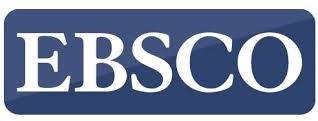Designing a Quantitative Model for Measuring Justice in Financial Resource Allocation Using Public Policymaking (Case Study: Ministry of Economic Affairs and Finance)
Keywords:
Model design, justice measurement, financial resource allocation, policy making, Ministry of Economic Affairs and FinanceAbstract
The aim of this study is to design a quantitative model for measuring equity in financial resource allocation through public policy-making, with a case study on Iran’s Ministry of Economic Affairs and Finance. This study employs a descriptive-survey method, categorized as applied in purpose and cross-sectional in time. The statistical population included 548 staff members, experts, and senior officials in the Ministry. Using stratified random sampling, 225 individuals were selected. Data were collected using a structured questionnaire covering five dimensions: transparency, equity, efficiency, accountability, and procedural justice. Data analysis was conducted using PLS software, and the instrument's validity and reliability were confirmed through construct validity, convergent and discriminant validity, and Cronbach’s alpha. The results indicated that all model dimensions (transparency, equity, efficiency, accountability, and procedural justice) had a statistically significant impact on financial resource allocation equity. Path coefficients and T-statistics confirmed the model’s strength. Notably, accountability and equity had the highest influence on promoting justice in financial allocation. This study concludes that achieving justice in financial resource allocation requires focusing on transparency, equity, efficiency, accountability, and procedural fairness in policy-making processes. Implementing the proposed model can improve financial decision-making, enhance public trust, and reduce social and economic inequalities.
Downloads
References
Ali Zadeh, I., Vakili Fard, H. R., & Hamidian, M. (2021). Investigating the Micro and Macro Factors of Economic Policies Affecting the Financial Performance of Companies. https://civilica.com/doc/1585862
Alvani, S. M., & Sharifzadeh, F. (2015). The process of public policymaking. Allameh Tabataba'i University.
Ardestani, A., & Tabrizian, H. (2014). The Impact of Interventionist Policies on Economic Development (Case Study: Zimbabwe). Siasat- Journal of Faculty of Law and Political Science, 44(3), 565-586. https://sid.ir/paper/110155/fa
Asadpour Hamzeh, A., Amirkabiri, A., & Rabiei Mandjin, M. R. (2023). Designing and Explaining a Model Based on Systemic Policymaking (With Emphasis on Almond Model) in the National Iranian Tax Administration. Tax Research, 30(53), 7-44. https://doi.org/10.52547/taxjournal.30.53.1
Kashanipour, M., Nadiri, M., Moharrampour, G., & Baher, A. (2024). Implementation of performance-based budgeting and accrual accounting in public organizations in Iraq. International Journal of Nonlinear Analysis and Applications, 15(1), 161-178. https://doi.org/10.22075/ijnaa.2023.28909.4268
Kim, M., Oh, J., & Shin, Y. (2017). Misallocation and Manufacturing TF in Korea 1982-2007. Federal Reserve Bank of St. Louis Review, 99(2), 233-244. https://doi.org/10.20955/r.2017.233-244
Kwarteng, A. (2018). The impact of budgetary planning on resource allocation: evidence from a developing country. African Journal of Economic and Management Studies, 9(1), 88-100. https://doi.org/10.1108/AJEMS-03-2017-0056
Libert, L. (2017). Misallocation Before, During and after the Great Recession. Working Paper, Banque De France. https://doi.org/10.2139/ssrn.3095507
Madsen, M. (2024). Performance-based funding and institutional practices of performance prediction. Critical Studies in Education, 1-19. https://www.tandfonline.com/doi/abs/10.1080/17508487.2025.2453518
Moghimi, S. M., Pourezzat, A. A., Danaeifard, H., & Ahmadi, H. (2016). Explaining the Elements of Good Governance in the Policy-Making of the Country's Budgeting System. Strategic Studies of public policy, 6(21), 31-52. https://sspp.iranjournals.ir/article_24997_2257.html
Mohammadian, M., & Mahtari, Z. (2014). The Structure of the Accounting System Governing Operational Budgeting: Challenges and Reforms. Accounting and Auditing Studies, 3(9), 54-67. https://www.iaaaas.com/article_103577.html
Monavarian, A. (2015). Implementation and Evaluation of Public Policy. Mehraban Book Institute.
Nagurney, A., Salarpour, M., & Daniele, P. (2019). An integrated financial and logistical game theory model for humanitarian organizations with purchasing costs, multiple freight service providers, and budget, capacity, and demand constraints. International Journal of Production Economics, 212, 212-226. https://doi.org/10.1016/j.ijpe.2019.02.006
Pour Ezzat, A. A., Ahmadi, H., & Abbasi, A. (2019). Identifying the Components of Intergenerational Justice in Iran's Budget Policy. Journal of Public Policy, 5(2), 143-161. https://journals.ut.ac.ir/article_72276.html
Pourghaffar, J., Mohammadzadeh Salteh, H., Zeinali, M., & Mehrani, S. (2021). Investigating the Effective Indicators on the Establishment of Performance-Based Budgeting System in Iran. Quarterly Journal of Fiscal and Economic Policies, 9(35), 169-198. https://doi.org/10.52547/qjfep.9.35.169
Qing, X., & Lili, G. (2017). The Causes Analysis of Public Policy Implementation Deviation: Based on a Framework of Paul A. Sabatier and Daniel A. Mazmanian. https://www.atlantis-press.com/proceedings/iceiss-17/25886759
Rahmani Fazli, H., & Arab Mazar, A. (2016). Optimal Provincial Allocation of Budget: A Goal Programming Model Approach. Journal of Applied Theories of Economics, 3(3), 133-152. https://doi.org/10.22108/amf.2022.129809.1684
Rostami, M. R., & Godazgar, Z. (2023). Optimal Asset Allocation Using the Cyclical Behavior of Basic Goods; Regime Switching Approach. Asset Management and Financing, 10(4), 25-46. https://doi.org/10.22108/amf.2022.129809.1684
Salimi Far, M., Davoudi, A., & Arabi, A. (2017). Investigating the Effects of Government Budget Composition on Welfare Indicators in Iran. Economic Strategy(12). https://profdoc.um.ac.ir/paper-abstract-1054395.html
Taghvai Najib, A., Rezaeian, A., & Rabiei Mandjin, M. R. (2023). A Comparative Study of the Supervisory Role of the Parliament in the Budgeting Process and Its Position in the Implementation of the General Policies of the Legislation System. Strategic and Macro Policies, 10(37), 132-163. https://doi.org/10.30507/jmsp.2021.285312.2245
Tahmasebi. (2024). Optimal Allocation of Assets Under Inflation. https://journals.pnu.ac.ir/article_10781.html
Xiao.Hui, Gao, S., & HayLee, L. (2017). Simulation budget allocation for simultaneously selecting the best and worst subsets. Automatica, 84, 117-127. https://doi.org/10.1016/j.automatica.2017.07.006
Zhang, C., JingKong, J., & Simonovic.SlobodanP. (2018). Restoration resource allocation model for enhancingresilience of interdependent infrastructure systems. Safety Science, 102, 169-177. https://doi.org/10.1016/j.ssci.2017.10.014
Downloads
Published
Submitted
Revised
Accepted
Issue
Section
License
Copyright (c) 2025 حسین مطرانلویی, کرم سینا, غلامحسین آقا گل زاده (نویسنده)

This work is licensed under a Creative Commons Attribution-NonCommercial 4.0 International License.








